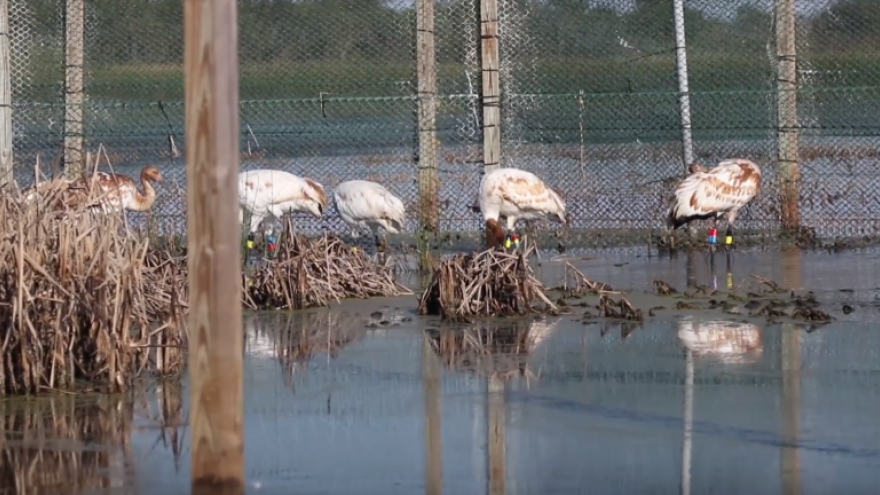Wisconsin researchers work to help whooping cranes

HORICON, Wis. (AP) — Wisconsin's ongoing experiment to create a self-sustaining flock of whooping cranes in the eastern United States has taken on a family of temporary tenants at the marsh in the Horicon National Wildlife Refuge.
The two chicks in the family were born in a private conservation facility in Florida before the family was transported to Wisconsin in a jet about four months ago, WUWM-FM reported. Scientists had paired a male crane from the wild, nicknamed Grasshopper, with a female crane, nicknamed Hemlock, from captivity.
"We have never tried it with whooping cranes from the wild before, which is something we thought might work, because we have whooping cranes in captivity that we paired based on their own behavior or needs for the breeding population in captivity," said wildlife biologist Hillary Thompson.
Thompson said it's uncommon, but OK to mix wildlife biology and captive rearing.
"This project is back and forth between two worlds all the time and that's not really something that a lot of people do in wildlife science, I think," she said.
Thompson works with the Baraboo-based International Crane Foundation, one of the organizations involved in the public-private Whooping Crane Eastern Partnership. Scientists in the area have been trying for nearly 20 years to help the whooping crane, which is an endangered species because of widespread habitat loss sand over-hunting.
More than 100 of the birds now migrate between Wisconsin and southeastern states. Many of the birds were brought to Wisconsin as chicks and raised by humans wearing crane costumes and flying ultralight aircraft.
